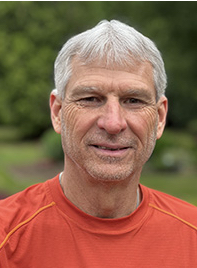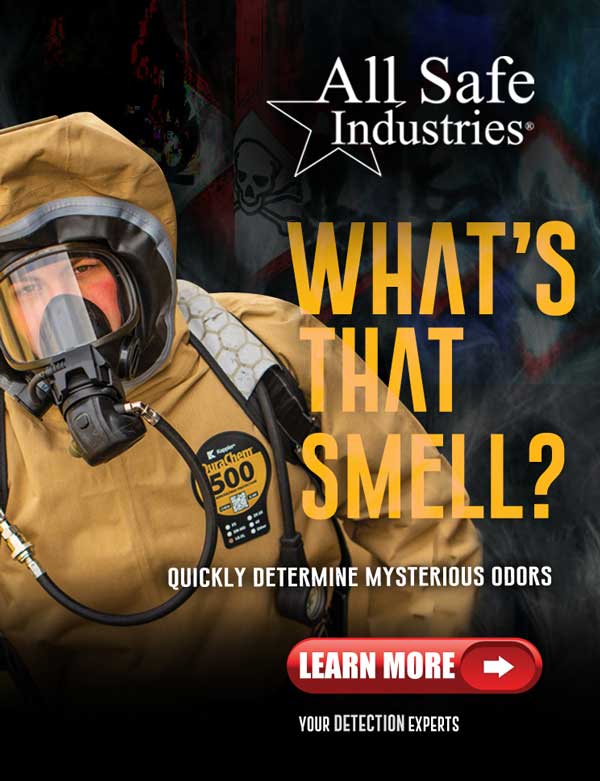By Ron Holcomb
Editor’s Note: Author Ron Holcomb is sharing a chapter from his recently released book Constant Chaos. You can read Part 1 of this chapter here. We’ll feature other chapters in the coming months. Click here for more information on how to get his book.
PART VIII Meth to Marijuana
Chapter 32 — Annie
Remote Depressurization by Rifle
As the number of Nazi method labs grew, we needed a more efficient way to manage these ammonia tanks. There was no EPA-approved disposal method, and hazardous waste facilities could not accept them for storage, treatment or incineration. We first checked with the regional air pollution agency and received permission to conduct controlled small-quantity emergency NH3 air releases.
Ecology hired Dave Kummerlowe, our hazardous materials training consultant, to conduct tests on a method to remotely depressurize these cylinders by rifle shot. Although anhydrous ammonia is not considered a flammable gas by federal definition for labeling purposes (thanks to the agricultural lobby), it can be under certain conditions. Also, there was a chance that a tank could be incorrectly assessed so we wanted to know how a tank holding propane would respond if shot.
No tanks containing propane or NH3 exploded or caught fire during the tests, which were conducted in a remote area in eastern Washington. When the bullets penetrated the metal tanks, the vapor mixture was too rich to ignite. Kummerlowe published the findings along with our tank modification identification procedures. That information was widely shared with other states as the Nazi method moved east across the country.
With our results in hand, we bought a rifle for a Thurston County Sheriff Deputy and received approval from the county public works department to use a remote gravel pit. Our new procedure involved transporting NH3 tanks from meth labs to our chemical storage facility, and about every two weeks we took the accumulated tanks to the gravel pit.
There the deputy used the rifle to remotely depressurize the tanks that were set on a lined containment pad. The resulting vapor cloud readily dissipated into the air. We invited a reporter and a photographer from The Olympian newspaper to one of the tank shoots to explain the challenge we faced. The paper published a story with photos in February 2000 titled “Ecology takes aim at meth lab waste.” When the county needed to use the gravel pit, we moved our operation to the Pierce County Sheriff’s Firing Range.
Over 10 years, several thousand tanks were successfully and safely depressurized at the remote range. Occasionally, we got to shoot them ourselves. The empty tanks were disposed of as solid waste.
We still had a few emergency cases where leaking or dangerously full NH3 tanks had to be sparged into water where we found them. And tanks that were completely full of ammonia posed the most dangerous risk at meth labs. Those tanks were extremely hazardous because they could potentially rupture.
Meth cooks wanted to get as much ammonia in a tank as possible and at times they didn’t leave any air space above the liquid. This presented a highly dangerous situation. If a full NH3 tank is warmed, even a little, by the heat of the day, for example, the liquid could expand and physically cause the tank to burst. In this kind of a catastrophic failure, the extremely cold liquid would be forcefully expelled from the tank while at the same time it would be rapidly changing into an expanding and deadly gas cloud.
That is what happened in August 2000 at a clandestine meth lab in Benton City in eastern Washington. A propane tank full of anhydrous ammonia burst, spraying the meth cooks and burning their eyes and skin. Sheriff department narcotics officers discovered the lab after one of the victims showed up at a food mart covered in chemical burns and needing medical aid.
Handling Dangerously Full Tanks
Two times I personally encountered 5-gallon propane tanks that were completely full of anhydrous ammonia and posed an imminent danger of bursting like the one in Benton City. In those situations, we filled 55-gallon drums full of water and placed the tanks in them. In both cases, the valves failed and began releasing the gas into the water while the upside-down tanks rapidly spun in circles. It sounded like a jet engine as the tanks continued to spin until they were empty. We checked the air around the drums and did not detect any of the water-seeking NH3.
Over time, retail gas facilities stopped carrying anhydrous ammonia due to repeated thefts. Meth cooks then started making their own in small amounts using a simple but crude method. That change reduced our risk because the spent ammonia generators, as we called them, were not as dangerous and were much easier to render safe and to dispose of.
The difficulty in obtaining NH3 may have been partly responsible for a new simple meth-making technique called the “One-Pot” method that surfaced in Washington and other parts of the country.
This method involved putting all the chemicals together inside a plastic two-liter soda container. The container was shaken to get the chemical reaction going. Instead of anhydrous ammonia, ammonium nitrate from cold packs was used. This “shake and bake” method was extremely dangerous because an incorrect chemical mixture could result in too much pressure causing the container to burst and catch fire. We collected many of these containers with the leftover waste in roadside ditches.
There is one other dangerous gas involved in all meth-making methods. The final step in the process involves bubbling corrosive and toxic hydrogen chloride gas into a solution that causes methamphetamine to precipitate out in a semi-solid form. The meth is then dried out to make the final product.
Meth cooks typically made their own hydrogen chloride gas in a simple process. Rock salt and acid, both readily available at hardware stores, were combined in plastic, glass or metal containers of various sizes. A rubber hose or plastic tubing carried the gas into the solution holding the dissolved methamphetamine.
Often, these acid gas generators continued to off-gas when we arrived at a meth lab. To make them safe, we had to stop the reaction. We did this by putting water into the container or dumping the residual salt and acid into a larger plastic container and filling it with water. This process stopped the gas from forming and created an acidic liquid that was easier to manage and dispose of. In some cases, meth cooks used empty pressurized cylinders for their acid gas generators. The safest way to manage these tanks was to remotely depressurize them by rifle shot at our regular tank shoots.
Although we came to greatly dislike meth labs and all the associated problems we saw, we became better spill responders from that work. Ecology developed a program that certified us as hazardous materials specialists and we had to complete an annual 40-hour recertification process.
The experience and expertise we gained dealing with so many kinds of hazardous chemicals and dangerous pressurized cylinders was extremely useful when dealing with other hazmat incidents. There weren’t many people in the state during those years that had more individual “hands-on” experience with hazardous materials than Ecology Spill Responders.
About the Author

Ron Holcomb worked as a spill responder for the Washington State Department of Ecology before retiring in 2020 after a 40-year public service career dedicated to protecting the environment. He was the Spill Team Lead for Ecology’s Southwest Region and personally handled more than 6,000 oil and hazardous material spill incidents. Prior to being a spill responder, he was a public information officer for Ecology and the Wisconsin Department of Natural Resources. He received a Master of Science in Environmental Communications from the University of Wisconsin after graduating with a degree in Journalism, Biology and Natural Resources from Humboldt State University in Arcata, Calif. He developed his love of the outdoors and concern for the environment during childhood experiences in national parks and forests, and as a member of The Mountaineers. In retirement he still enjoys climbing peaks in the Olympic and Cascade Mountains.



